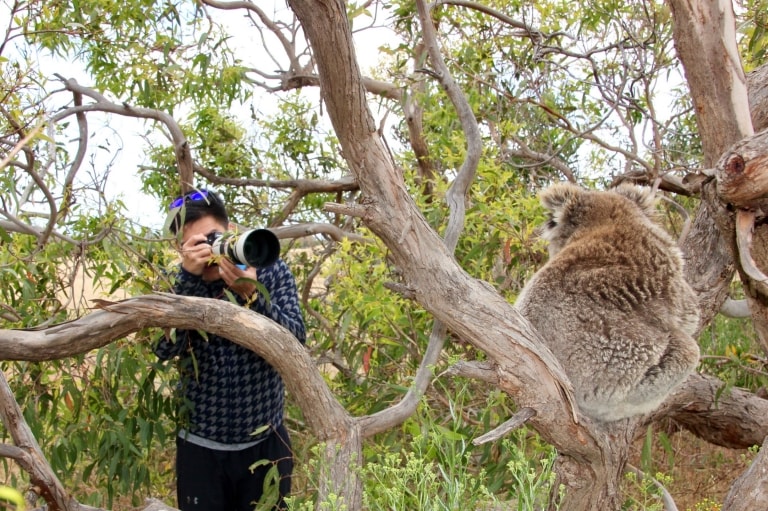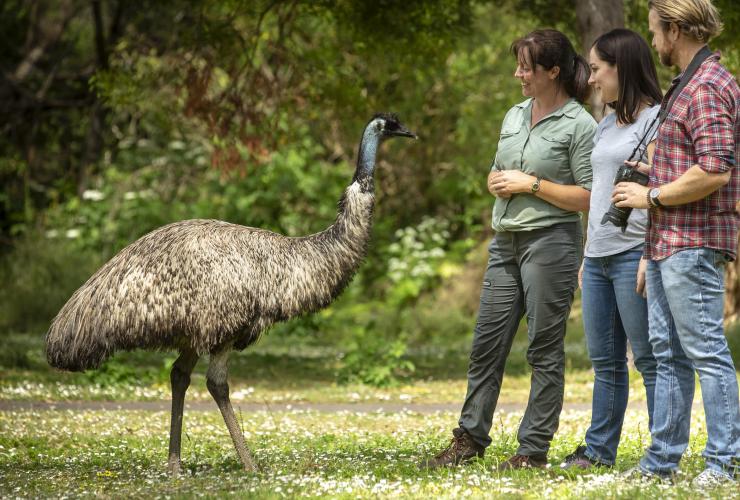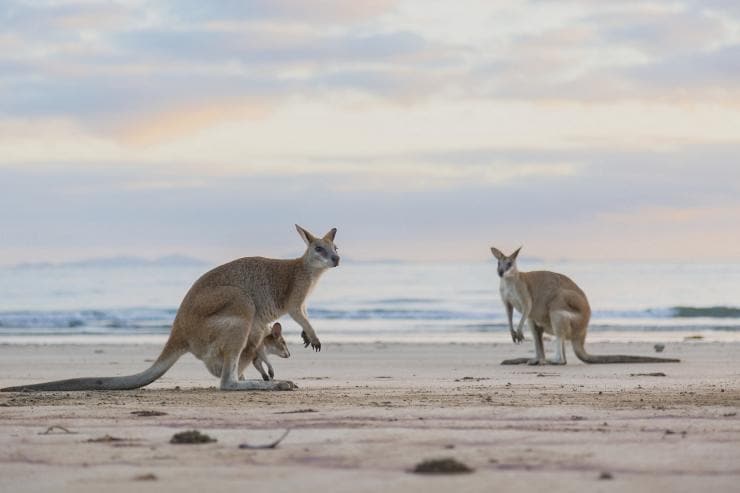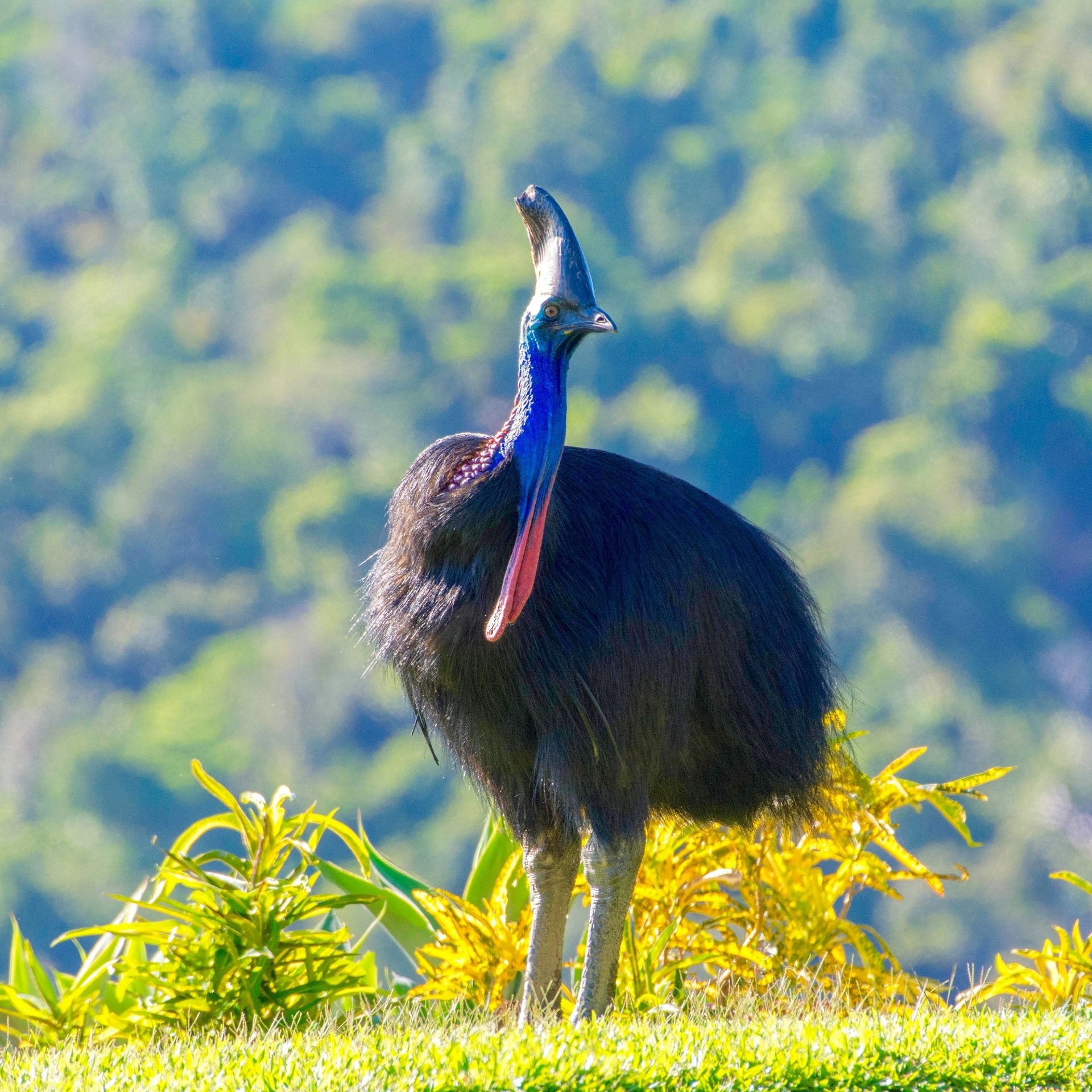
Port Lincoln, Eyre Peninsula, South Australia © Australian Coastal Safaris
Top tips for viewing wildlife in Australia
Unique animals and birds can be found in every corner of the Australian continent – here’s your best chance of spotting them.
By Carolyn Beasley
Australia’s unique wildlife features on everything from television documentaries to t-shirts. But seeing these animals in real life, in the wild, is different – some might say a transformative experience. For nowhere else in the world can you watch huge kangaroos graze in fields, fuzzy koalas snooze in gum trees, or spiky echidnas waddle through the Aussie bush.
Wildlife can be found everywhere in Australia, even in our cities. But while spotting animals can be exhilarating, it’s important to give them space, for their safety and your own. Follow these simple tips and you’ll be spotting our furry and feathered friends in no time.
1. Seek local advice

Worn Gundidj @ Tower Hill, Great Ocean Road, Victoria © Archie Sartracom
Start your Australian wildlife journey by asking locals what type of animals can be found in the area, and when are the best times or places to spot them. Tourist information centres can also help to steer you in the right direction. Of course, the easiest way to find wildlife is to hire a guide or book a tour with a reputable and ethical company.
2. Do your research

Comb-crested Jacana bird, Bamurru Plains, Point Stuart, Northern Territory © Wild Bush Luxury
Read next
Our guide to Australia's animals
Before you hit the road with your binoculars, it’s a good idea to read up on the animals or birds you’re hoping to spot. Find out if they are seasonal visitors, and what type of habitat they prefer. Many animals or birds are drawn to water, so staking out a position near a creek or waterhole often pays off. Scan the treetops for flitting birds, and the ground for scuttling lizards.
3. Be prepared

FNQ Nature Tour, Lamb Range, Cairns, Queensland © FNQ Nature Tours
Bring the right equipment to navigate the Australian bush: sturdy shoes, a hat, sunscreen, insect repellent, and appropriate clothing. And always remember to take along plenty of water. A pair of binoculars will bring your animal-viewing to life, as will a local bird identification book. If you’re looking for animals at night, a flashlight with a red filter is less disturbing to the animals.
4. Pack the right lens

Kangaroo, Cape Hillsborough National Park, Queensland © Matt Glastonbury/Tourism and Events Queensland
If you’re hoping to come home with some great souvenir wildlife shots, a telephoto lens is the ultimate accessory, allowing you to capture high detail from a distance. But don’t fret if you don’t have a big lens, as some animals, particularly slow-moving, ground dwelling animals like echidnas, can be captured beautifully on a smartphone camera. Above all, don't forget to give yourself time to take it all in outside of your screen – don’t miss the chance to just enjoy being in the company of wildlife.
5. Hit the countryside

The Otways, Great Ocean Road, Victoria © Great Ocean Road Tourism
You’re unlikely to spot a kangaroo hopping through the centre of Sydney, but once you reach the outskirts of Australia’s cities, you can expect to find more animals roaming around. Some of our richest wildlife hotspots are in national parks and nature reserves, and these are great places to take a quiet bushwalk looking for animals. In regional areas, you may even share a round of golf with wild kangaroos, which love to hang out on golf courses.
6. Go wildlife-spotting at dusk and dawn

Kookaburras, Lake House, Daylesford, Victoria © Christina Simons
The hours after dawn and before sunset are some of the best times for spotting animals. Many animals and birds forage for food then, avoiding the hotter part of the day. Listening to the bird calls of the “dawn chorus” in the Australian bush is unforgettable; go camping or upgrade to a night of glamping to immerse yourself in this experience.
7. Be quiet and patient

Sea lions, Kangaroo Island, South Australia © Tourism Australia
When searching for wildlife, it pays to reduce your noise. Travel in a small group, talk softly, and switch your phone to silent mode. Once you’ve spotted wildlife, it’s often a good idea to crouch low. If you make yourself look smaller, the animals will be less concerned about you.
When watching an animal, sit and wait. If you stop moving, the animal may reward you by resuming its normal behaviour, like grazing or socialising. If you’re very lucky and the animal feels safe, it may even choose to come closer.
8. Be respectful of wildlife

Wombat, The Maria Island Walk, Maria Island, Tasmania © The Maria Island Walk
Don’t forget to keep in mind that wildlife is wild. For your own safety, animals should never be approached too closely. Maintaining a respectful distance, and never feeding wildlife, will give you the most authentic experience, and will also be best for the critters in your company.


































































































































